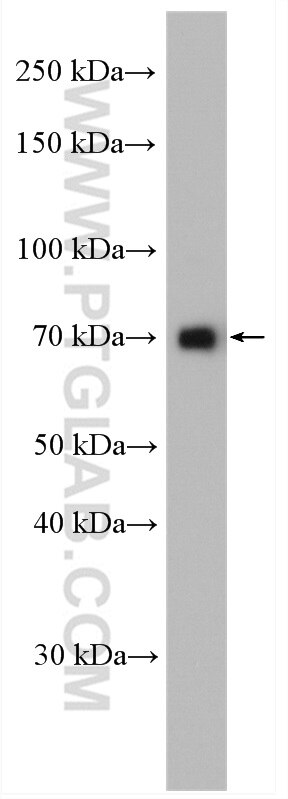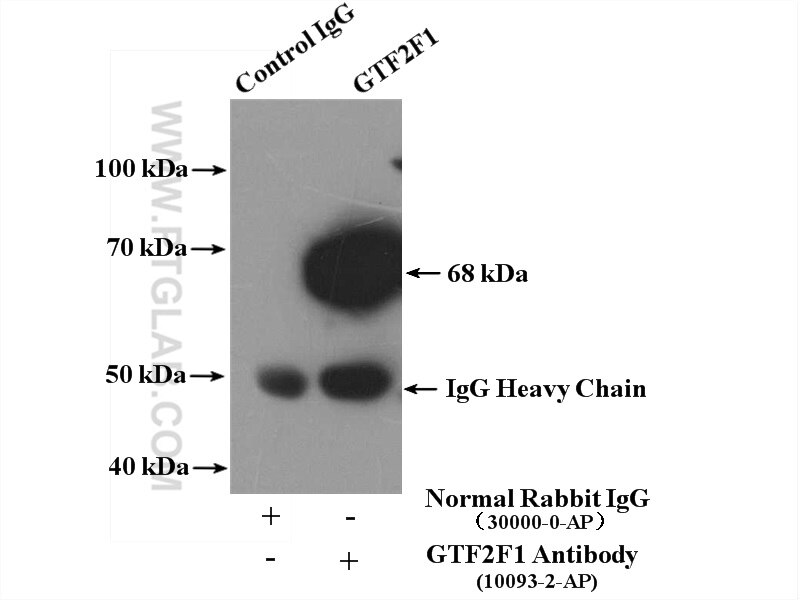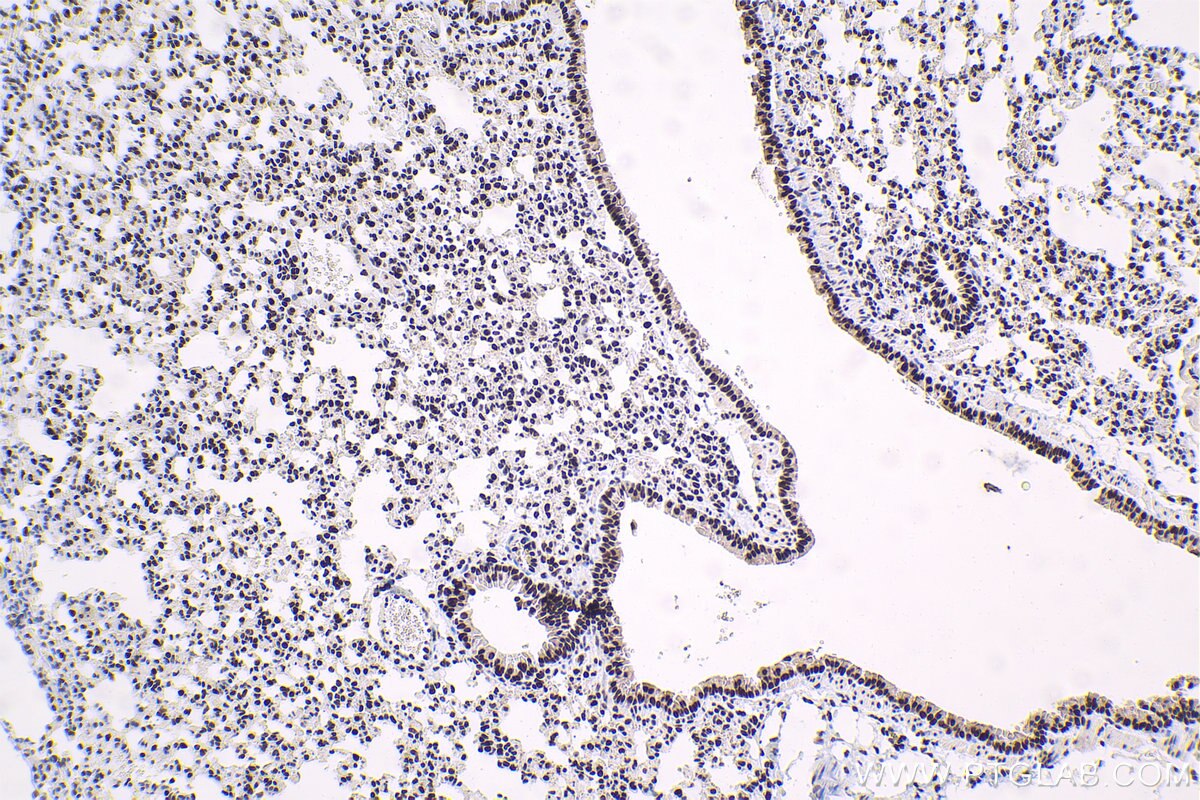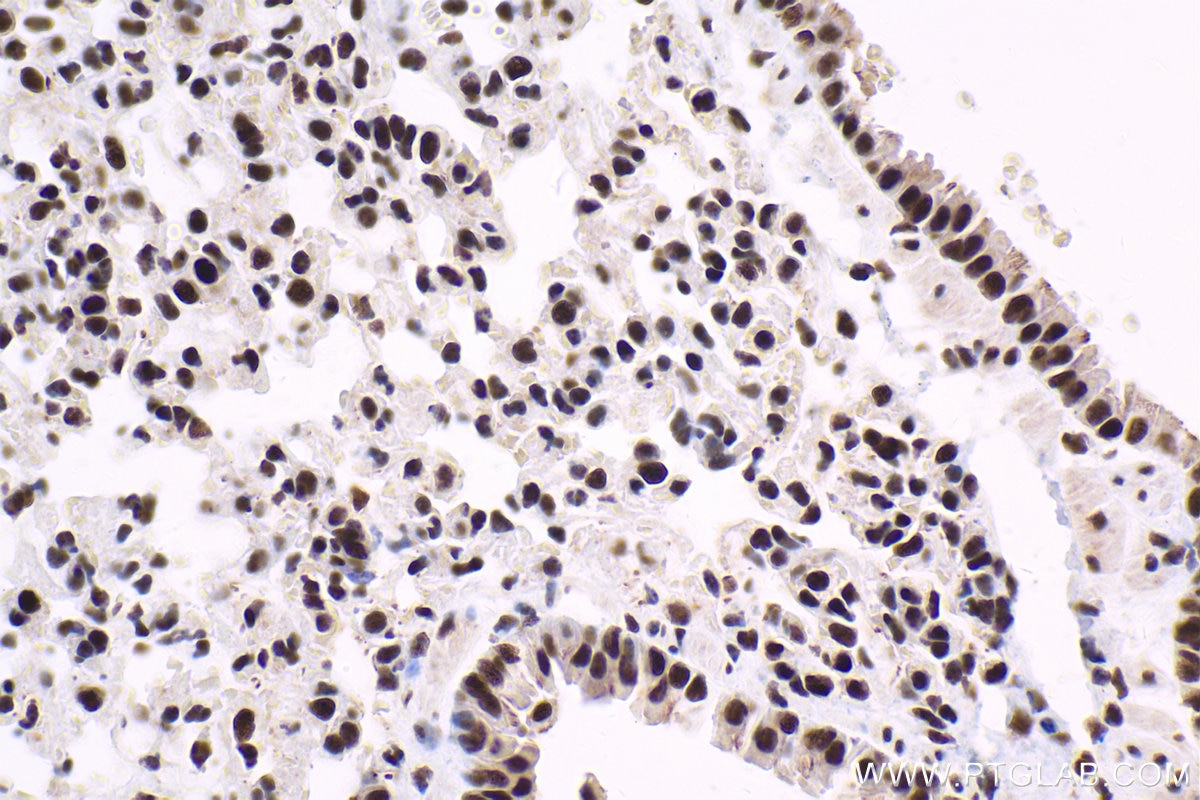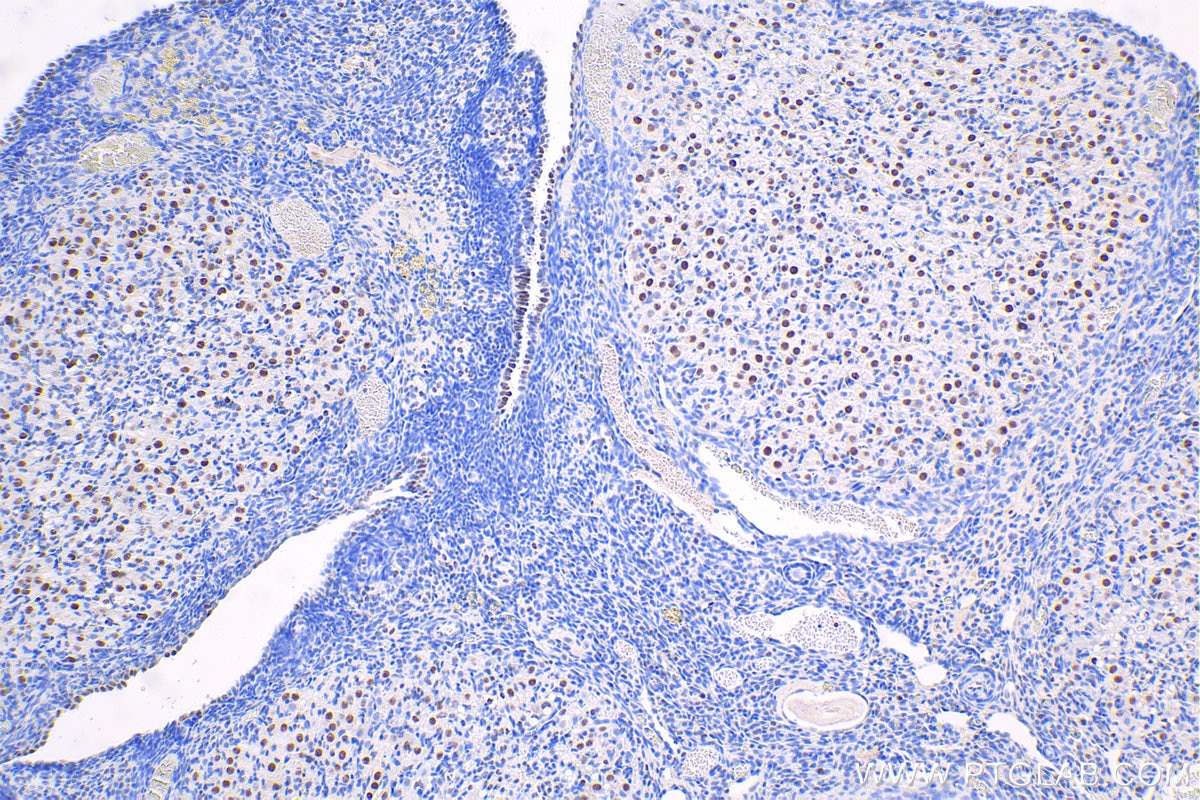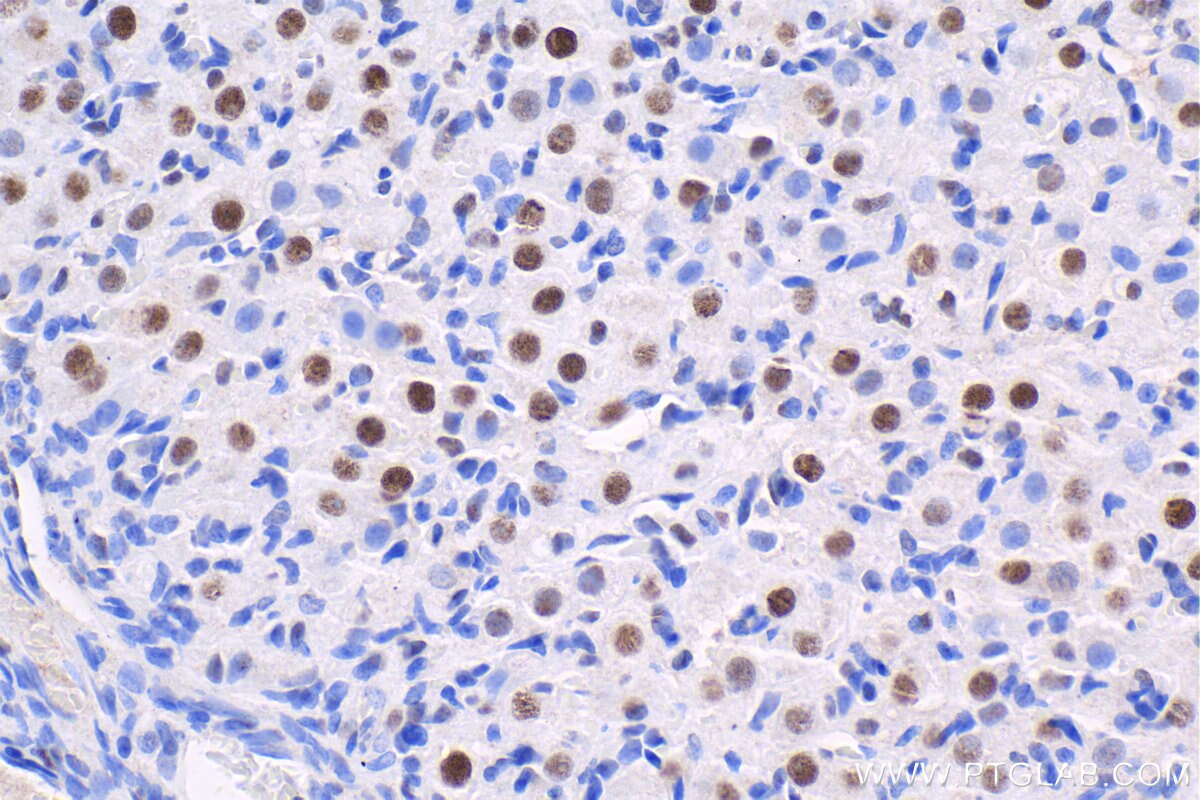Anticorps Polyclonal de lapin anti-GTF2F1
GTF2F1 Polyclonal Antibody for WB, IP, IHC, ELISA
Hôte / Isotype
Lapin / IgG
Réactivité testée
Humain, rat, souris
Applications
WB, IP, IHC, ELISA
Conjugaison
Non conjugué
N° de cat : 10093-2-AP
Synonymes
Galerie de données de validation
Applications testées
| Résultats positifs en WB | cellules K-562, |
| Résultats positifs en IP | cellules K-562 |
| Résultats positifs en IHC | tissu pulmonaire de souris, tissu ovarien de rat il est suggéré de démasquer l'antigène avec un tampon de TE buffer pH 9.0; (*) À défaut, 'le démasquage de l'antigène peut être 'effectué avec un tampon citrate pH 6,0. |
Dilution recommandée
| Application | Dilution |
|---|---|
| Western Blot (WB) | WB : 1:500-1:2000 |
| Immunoprécipitation (IP) | IP : 0.5-4.0 ug for 1.0-3.0 mg of total protein lysate |
| Immunohistochimie (IHC) | IHC : 1:500-1:2000 |
| It is recommended that this reagent should be titrated in each testing system to obtain optimal results. | |
| Sample-dependent, check data in validation data gallery | |
Applications publiées
| WB | See 2 publications below |
Informations sur le produit
10093-2-AP cible GTF2F1 dans les applications de WB, IP, IHC, ELISA et montre une réactivité avec des échantillons Humain, rat, souris
| Réactivité | Humain, rat, souris |
| Réactivité citée | Humain |
| Hôte / Isotype | Lapin / IgG |
| Clonalité | Polyclonal |
| Type | Anticorps |
| Immunogène | GTF2F1 Protéine recombinante Ag0133 |
| Nom complet | general transcription factor IIF, polypeptide 1, 74kDa |
| Masse moléculaire calculée | 58 kDa |
| Poids moléculaire observé | 74 kDa |
| Numéro d’acquisition GenBank | BC000120 |
| Symbole du gène | GTF2F1 |
| Identification du gène (NCBI) | 2962 |
| Conjugaison | Non conjugué |
| Forme | Liquide |
| Méthode de purification | Purification par affinité contre l'antigène |
| Tampon de stockage | PBS with 0.02% sodium azide and 50% glycerol |
| Conditions de stockage | Stocker à -20°C. Stable pendant un an après l'expédition. L'aliquotage n'est pas nécessaire pour le stockage à -20oC Les 20ul contiennent 0,1% de BSA. |
Informations générales
In eukaryotic systems, the initiation of gene transcription involves the ordered assembly of a multiprotein complex on proximal promoter elements, consisting of RNA polymerase II and broad families of auxiliary transcription factors. Such factors can be divided into two major functional classes: the basal factors that are required for transcription of all Pol II genes, including TFIIA, B, D, E, F and H; and sequence specific factors that regulate gene expression. The basal transcription factors and Pol II form a specific multiprotein complex near the transcription start site by interacting with core promotor elements such as the TATA box generally located 25-30 base pairs upstream of the transcription start site. TFIIF, a heteromer composed of a small (RAP 30) and a large (RAP 74) subunit, acting at an intermediate stage in initiation complex formation, binds directly to RNA polymerase II in solution and decrease the affinity of RNA polymerase II for nonspecific DNA. In addition, TFIIF stimulates transcription elongation by RNA polymerase II.
Protocole
| Product Specific Protocols | |
|---|---|
| WB protocol for GTF2F1 antibody 10093-2-AP | Download protocol |
| IHC protocol for GTF2F1 antibody 10093-2-AP | Download protocol |
| IP protocol for GTF2F1 antibody 10093-2-AP | Download protocol |
| Standard Protocols | |
|---|---|
| Click here to view our Standard Protocols |
Publications
| Species | Application | Title |
|---|---|---|
Cell Rep RPAP2 regulates a transcription initiation checkpoint by inhibiting assembly of pre-initiation complex. | ||
